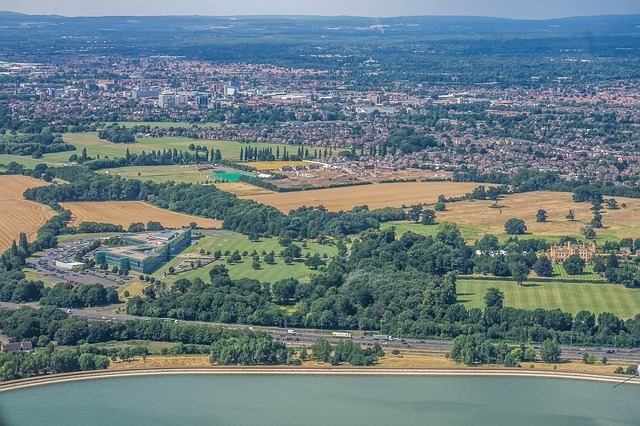
Insight – these cities will continue to attract investors post-Covid-19
In recent times, regional property markets have seen a significant increase in investor interest. This upwards trajectory has been historically driven by two factors; one being to reduce risk
aversion amongst investors in the wake of the global financial crisis, and the other being rooted in the desire to capture the short-term leasing market that has started to drain away from London.
This slow and steady growth, however, has seen a fresh uptick in the wake of the Covid-19 pandemic, as investors have begun to take note of the growth of second cities and now seek opportunities beyond London.
Whilst it’s true that the global pandemic presented investors with a new and unique set of challenges across all real estate sectors, disruption to residential investor interest in the regions was short-term. The pandemic acted as a catalyst for growth, with existing investors committing to further investments, and an interesting rise in new entrants looking to start their portfolios.
The rental market across the UK’s major cities saw an increase in tenant demand from 10.4% to 37.6% for the first quarter of 2021 according to The Rental Market Demand Review, with
northern cities seeing the strongest growth. Therefore, this heightened interest in the regions looks to be a permanent fixture rather than a pandemic fad, spurred by factors including changing attitudes to renting, regeneration of second cities, impressive yields comparative to London, and a greater ability to benefit from short-term lettings.
Over the past five years, the desirability of cities such as Manchester and Liverpool have benefited from a substantial amount of investment in commercial and residential development. The recent regeneration that is sweeping the north-west of England, and influx of new companies choosing to take up office space in these regions, means these cities have become increasingly attractive to young professionals looking to kick-start their career. According to figures from JLL, in 2019 there was a 117% rise in people moving to Manchester, compared to 2018. Lettings agreed also rose by 103% over the same period, linked to the high number of young professionals living in the area. Whilst these wheels were in motion pre-pandemic, Covid has accelerated this with many London professionals moving up North as the remote working revolution takes off in full swing.
Here at Alesco, many of our buy-to-let investors over the course of the pandemic have been from London. Due to the more accessible price points and high rental yields, these opportunities in the Northern cities are unheard of in London, which therefore gives younger people not only the option to get on the property ladder but allows for them to begin building an investment portfolio.
Overseas investors have also contributed to the increasing popularity of second cities, Manchester, in particular, is now classed as a leading European business destination and has attracted more foreign direct investment than any other city in the UK outside of London. This is especially the case with property investors from Hong Kong seeking attractive buy-to-let opportunities.
Although London has long been the traditional location for investors from Hong Kong, there has been a rise in buyers looking to the north-west of England, especially Liverpool and Manchester mostly due to cheaper prices, strong demand and higher rental yields than London. The value of the British pound has supported this, which fell following Brexit and remained low throughout Covid-19, making the UK more attractive to overseas investors.
The favourable exchange rates for foreign buyers, partnered with cheaper house prices in the north-west, has given a wider pool of investors the opportunity to purchase UK property. We have seen this first-hand with one of our Manchester developments selling out during the pandemic with 50% of buyers coming from Hong Kong. Buyers from this region are particularly attracted to our quality off-plan apartments as they can capitalize on attractive prices whilst not having to travel for viewings.
Beyond Covid-19, the north of England will continue to lead the way for overseas and domestic investors, however, an additional driver that investors could look to leverage post-Covid-19, is the predicted demand for short-term lets.
In recent times, serviced accommodation has become the fastest-growing asset class in Europe, generating returns far greater than those made on a traditional buy to let purchase. Earnings can average between 30-35% based on 75% occupancy levels, and would give investors the opportunity to double their returns.
According to ARLA Propertymark, 2.7% of all property owners in the UK have now moved from having long-term tenants in preference of short-term lets, due to the profitability of this model.
Cities in the north of England are becoming increasingly popular locations for short-term visitors. In 2018, Liverpool city centre had an influx of 1.34 million people visitors, which included business travellers, students and young professionals. City-wide regeneration across the Northern Powerhouse has transformed these regions into likeable destinations with easy access to transportation, restaurants, and other amenities – whilst also being central business districts. These cities also continue to host and attract major events and these factors are resulting in a growing number of people wanting to stay in short let properties, and the increased demand for this type of accommodation is contributing to the high rental yields that can be achieved.
Whilst London will always be an attractive investment opportunity for many, the projection for investments in the North of England, stands competitively against yields in the UK’s capital, and whilst these cities are still in their infancy of growth, it is expected that the regions will continue to flourish post-Covid-19 and increasingly attract domestic and foreign investors.
